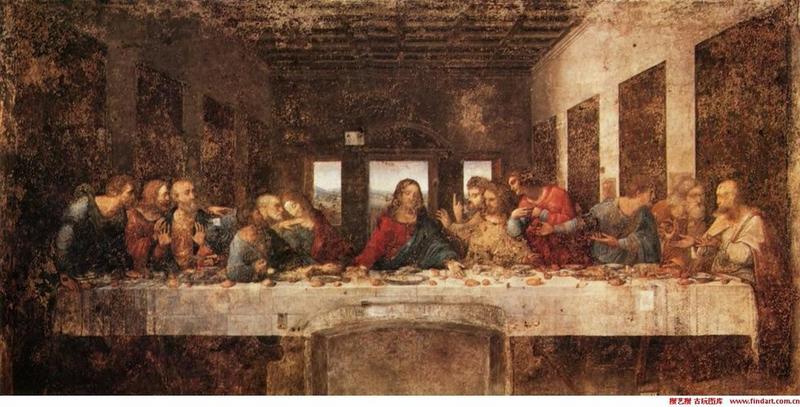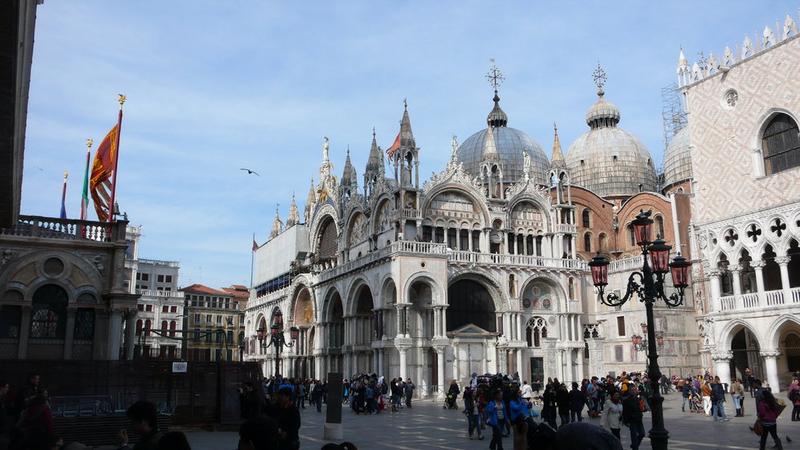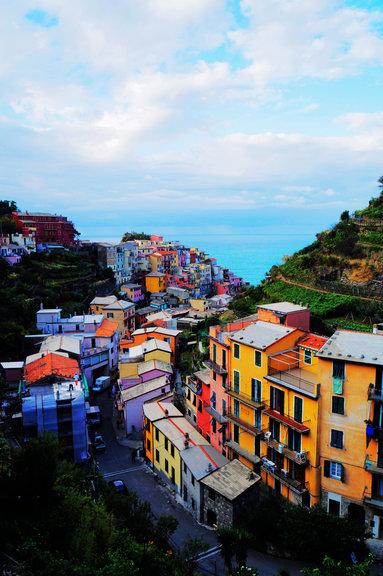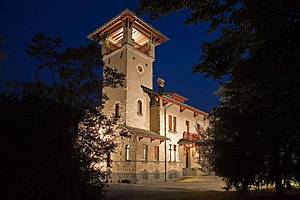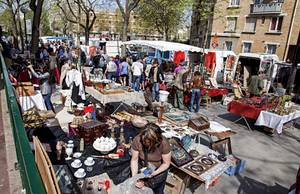First Visit | 7-Day Classic Self-Driving Route in Italy
7 cities |
25 attraction(s) |
total distance 1260
km
 TIPS
TIPS
Day1
Day2
Day3
Day4
Day5
Day6
Day7
Day1: Milan
5 attraction(s) ·
9 km
1
Also known as Milan Cathedral (Duomo in Italian refers to the city's main cathedral), it was first built in 1386 and is the iconic building in the center of Milan. The main body of the cathedral took over four centuries to be mostly completed in 1812, with the detailing work continuing until 1960 when the final bronze door was installed. Over the years, it has acquired a historical grandeur and multiple styles, with Gothic spires adorned in Baroque decorations, exuding luxury from top to bottom. The golden statue of the Virgin Mary at the top of the cathedral has silently guarded the city, while the glass coffin in the underground crypt houses the remains of Archbishop San Carlo Borromeo, who passed away in 1584. In 1805, Napoleon was crowned here and became the King of Italy. During World War II, the cathedral's main entrance was bombed and the scars can still be seen today.
3
km
3
Sforza Castle is one of the most important buildings in Milan and a witness to the city's rich history. It overlooks the castle like a grand principality, with high walls and a well-planned park on all sides. Built in the 14th century as a castle by the Sforza Count, it later became the residence of the Sforza family, witnessing the process from its peak to the family's decline. The castle is now converted into a museum by the Milan City Government, which includes the Museum of Applied Arts and Music, the Archaeological Museum, and the Museum of Ancient Art. Its rear gate is called the Gate of Peace, named after the ruler Francesco who transformed it.
1
km
4
"The Last Supper" is a well-known large mural painting created by Leonardo da Vinci during the Renaissance period on the wall of the dining hall of the Convent of Santa Maria delle Grazie in Milan. It was designated as a World Heritage Site in 1980.
2
km
5
Once known as the "paradise of opera," it constantly stages famous operas, concerts, and plays throughout the year except for August. Well-known works such as Turandot and Madama Butterfly were premiered here. The Teatro alla Scala is the second theater rebuilt on the same site, as the first theater, the Teatro Ducale, was destroyed by a fire in February 1776. After the incident, 90 wealthy Milanese who owned private boxes in the old theater wrote a letter to Archduke Ferdinand I of Austria, requesting the reconstruction of a new theater and a temporary theater to be used until the new one was completed. The new theater was completed in 1778 on the site of the Church of Santa Maria alla Scala, and it was officially inaugurated on August 3rd, 1778, under the name Nuovo Regio Ducal Teatro alla Scala, with the opera L'Europa riconosciuta by Antonio Salieri as its first performance. Renowned vocal artist Luciano Pavarotti performed here, and Giuseppe Verdi's famous opera Falstaff had its premiere at this theater. The opening ceremony of the theatrical season takes place on December 7th, the Feast of the Milanese Patron Saint. It was damaged during an air raid in 1943 and was rebuilt in 1946. In front of it is the Piazza della Scala, which features Leonardo da Vinci's statue.
Day2: Milan > Venice
3 attraction(s) ·
275 km
1
Equivalent to the city center of Milan, the central square features a bronze statue of the first king of the unified Kingdom of Italy, King Emmanuel II on horseback. To the north is the arcade named after him, Emmanuel II Arcade, now a luxury shopping street. To the east is the Milan Cathedral, and to the southeast is the cathedral's museum.
275
km
2
Located in St. Mark's Square, it was built by Venetian merchants in 829 AD to transport the remains of St. Mark (author of the Gospel of Mark) back to Venice. The entire church is in Byzantine architectural style, combining the essence of both Eastern and Western architecture. It is decorated with many Byzantine-style mosaic paintings, and St. Mark's tomb is located beneath the church's altar. The church also has a paid museum, galleries, and a golden altar.
A masterpiece of Byzantine architecture and art. The church considers the author of the Gospel of Mark as the guardian saint of the city. Throughout history, it has undergone multiple changes, characterized by a Greek-style cross structure and five large domes with mosaics. A replica of one of the four horses of St. Mark is located on the upper part of its facade (the original is a gilded bronze statue displayed in the St. Mark's Museum). From the top of the bell tower, you can enjoy the charming view of the entire city and lagoon.
On November 4, 1966, a high tide flooded Venice. St. Mark's Square was more than 1.2 meters deep in water, leaving over 5,000 people homeless and causing damage to many artworks.
1
km
3
Palazza Ducale
The Ducal Palace, also known as the Doge's Palace, was built in 814 and is a Byzantine-style building. The Palace was the government and court in the past and also the residence of the Doge of Venice. It faces the Venetian Lagoon to the south, St. Mark's Square to the west, and St. Mark's Basilica to the north. The current building was mainly constructed between 1309 and 1424. In 1574, the Palace suffered a severe fire and was heavily damaged. The current building is a Gothic-style architecture from the 15th century, with a length of over 70 meters facing the river to the south and the small square to the west. The lower two levels have a thickly decorated Gothic-style colonnaded arcade made of white limestone. However, there are also some classical features, with the entrance on the right side of the church and behind the Treasury. The inner courtyard features the "Giant's Staircase" built in the early 16th century. The staircase consists of 30 levels of marble steps and is adorned with giant sculptures of the god of war and the god of the sea.
Day3: Venice
3 attraction(s) ·
2 km
1
The Grand Canal of Venice is a must-visit place and a landmark of Venice. There are many boats of different sizes traveling on the canal, among which the black beautiful small boats paddled by uniformed boatmen are particularly popular with tourists. However, the buildings on both sides are quite dilapidated and the river water is a bit dirty, which deducts some points from the Grand Canal.
1
km
2
Behind the Governor's Mansion, there used to be a bridge that prisoners had to pass through to get to the prison behind the mansion. It was named the Bridge of Sighs because prisoners often sighed and repented when crossing it. It is recommended to visit at the same time as the Duke's Palace. If time is limited, it can be viewed from the outside. In fact, it is a closed bridge connecting the Duke's Palace and the prison. The Bridge of Sighs has an early Baroque architectural style, resembling a house with a domed top and sealed very tightly, with only two small windows on the side facing the canal. After being sentenced in the Governor's Mansion, serious offenders were taken to the dungeon and would pass through this airtight bridge, only able to catch a glimpse of the blue sky through the small windows. From then on, they lost their freedom and involuntarily let out a sigh. There is also an interesting legend that a condemned prisoner saw his former lover being affectionate with someone else at the other end of the bridge, causing him to deeply sigh. The Bridge of Sighs has since become a place where lovers witness their love, and it is said that lovers who kiss under the bridge will stay together for life. The movie "A Little Romance" was filmed here. Standing on the Bridge of Sighs, one should be able to vividly experience that taking one step forward leads to hell, while taking one step back leads to heaven.
2
km
Day4: Venice > Florence
3 attraction(s) ·
263 km
3
The Cathedral of Santa Maria del Fiore is the symbol of Florence, the tallest building in the city and the fourth-largest Catholic cathedral in the world. Designed by the local architect Filippo Brunelleschi, the dome of the cathedral is a miracle in architectural history, as it was built without the use of scaffolding and its hollow structure allows people to climb to the top. The exterior of the cathedral is made of green and white marble, giving it a solemn and exquisite appearance.
Inside the cathedral, you can climb to the top of the dome through a small door on the side. Although it is a challenging process with narrow passageways and many turns, once you reach the top, you can have a panoramic view of the entire city of Florence. The city's medieval urban layout, with its golden roofs, gray or white walls, narrow streets, and the sound of church bells, remains largely unchanged. The top platform of the cathedral is not large, but the wind is strong, so safety precautions should be taken.
Across from the Cathedral of Santa Maria del Fiore is its affiliated building, the Baptistery of San Giovanni. The most famous feature of this octagonal building is its golden door, which is actually made of brass and has remained vivid for over 600 years. Michelangelo praised it as the "Gate of Paradise." The golden doors depict ten reliefs based on biblical stories. To protect the original artifacts, they are kept inside the cathedral, and what people see in the baptistery is a 1:1 replica.
Beside the Renaissance-style cathedral is the Gothic-style bell tower, known as Giotto's Campanile, designed by the famous painter Giotto. It is still functioning today.
Day5: Civitavecchia > Florence
4 attraction(s) ·
271 km
1
The Forte Michelangelo is a landmark building in the small town of Civitavecchia, built in 1535 to strengthen port defenses and fend off pirate attacks. It is named after the central tower designed by Michelangelo. The castle is square in shape with a circular tower at each corner, and the central tower is octagonal in shape, displaying grandeur and a strong defense function combined with artistic aesthetics.
268
km
2
It is a building located in the Piazza della Signoria in Florence, Italy, adjacent to the Uffizi Gallery. Consisting of wide arches facing the street, it has three spaces separated by arches and one deeper space. The arches are supported by Corinthian columns. The lively architecture of the Loggia dei Lanzi contrasts with the simplicity of the Palazzo Vecchio and serves as an open-air museum of sculpture and Renaissance art. Built in the late 14th century, it was initially a meeting place and later became a lookout post for the mercenary police force of Cosimo I de' Medici. Inauguration ceremonies for abbots of the monastery and city officials have been held here throughout history. It now houses sculptures from ancient and Renaissance periods and is known as the "Open-air Museum of Art".
2
km
3
Palazzo Vecchio is the town hall of Florence, Italy. Its heavy Romanesque architecture and crenelated fortress make it the grandest town hall in Tuscany.
1
km
4
The Holy Cross Church of the Grey Friars is an important church. Firstly, it is the largest church of the Franciscan Order. Secondly, this church is a fairly standard secondary cathedral because the interior structure of most European Catholic churches was developed based on its form. Another important characteristic of this church is that many famous people from the Tuscany region and even Italy are buried here, including Dante, Galileo, Michelangelo, Machiavelli, and Marconi, etc.
Day6: Florence > Pisa > Cinque Terre
4 attraction(s) ·
214 km
1
Piazza della Signoria, also known as the City Hall Square, is the central square of Florence city. It is famous for its numerous sculptures, including the replica of Michelangelo's David. Other notable sculptures include the Fountain of Neptune, the equestrian statue of Cosimo I, lion sculptures, and the head of Medusa. The square is surrounded by the Palazzo Vecchio, the Uffizi Gallery, the Loggia dei Lanzi, and many cafes and bars. It is a popular gathering place for locals and tourists alike, and it remains the political center of Florence. The impressive 14th-century Palazzo Vecchio and its crenelated tower dominate the square.
88
km
2
The Leaning Tower of Pisa is an independent bell tower of the Cathedral of Pisa in Italy, a world-famous landmark and one of the symbols of Italy. Its construction began in 1173 and was completed in 1372. The tower leans to the southeast due to uneven foundations and soft soil. It is known for its unique beauty and architectural features. The tower, along with the adjacent cathedral, baptistery, and cemetery, was designated as a UNESCO World Heritage Site in 1987. It is located in the Piazza dei Miracoli in Pisa, Tuscany, and is part of a group of religious buildings in a unified Romanesque architectural style.
115
km
4
One of the five villages in Cinque Terre. Located at the end of the Corniglia-Manarola Trail, the colorful Manarola suddenly appears as a miracle, leaving people in awe. Similar to Corniglia, Manarola is also built on rocky cliffs. There are no beaches or ports, only a small landing platform. On sunny days, many people sunbathe on the platform and the surrounding rocks, which adds to the scenery. It is said that Manarola is the village in Cinque Terre with the most grapevines, and Sciacchetrà is a famous sweet wine in the area. In addition, there are many medieval relics in this town. At the northern end of Via Discovolo is Piazzale Papa Innocenzo IV, whose bell tower used to be used as a watchtower. Across from it is the Church of San Lorenzo, built in 1338, which houses a 15th-century multi-panel painting. There is also a path uphill on Via Rollandi, which passes through many vineyards and wineries and leads to the top of the mountain, where you can overlook the town and the beautiful surroundings.
From December 8 to early February, 300 light installations symbolizing the birth of Jesus are scattered in the terraced fields of Manarola. At night, all the designs are illuminated, making this colorful town even more dazzling and turning it into a sky full of stars. This is the largest nativity scene in the world.
Day7: La Spezia > Milan
3 attraction(s) ·
230 km
1
Museo Tecnico Navale
The Naval Technical Museum (Museo Tecnico Navale) in La Spezia was established in 1870 and is located right next to the local naval base. It exhibits many decorated ship bows and model ships.
224
km
2
This is a technology museum named after Leonardo da Vinci. The building was originally a 16th-century monastery, destroyed during World War II and rebuilt after the war, completed in 1953. The museum primarily collects artifacts, models, and designs related to Leonardo da Vinci. Among the exhibits are numerous manuscripts reflecting da Vinci's scientific imagination. There is a dredging ship he designed to solve canal silting, with a digging shovel shape similar to modern ones. His bicycle sketches have a chain drive system similar to modern structures. His ideal city architectural drawings and models appear grand.
6
km
3
Actually, it is a gathering place for Chinese people from Wenzhou. There are many Chinese restaurants with various Chinese specialties such as soup dumplings, pancakes with stuffing, soy milk and youtiao, dried tofu, and various vegetables. There are also shops selling Made in China clothing, Chinese supermarkets, pharmacies, etc.


